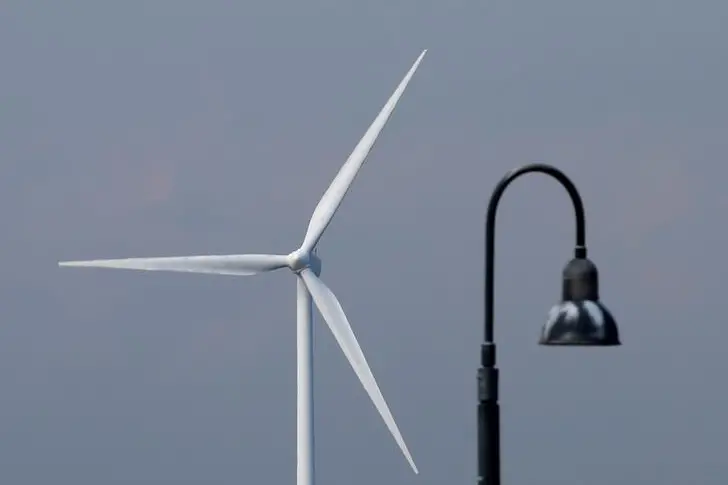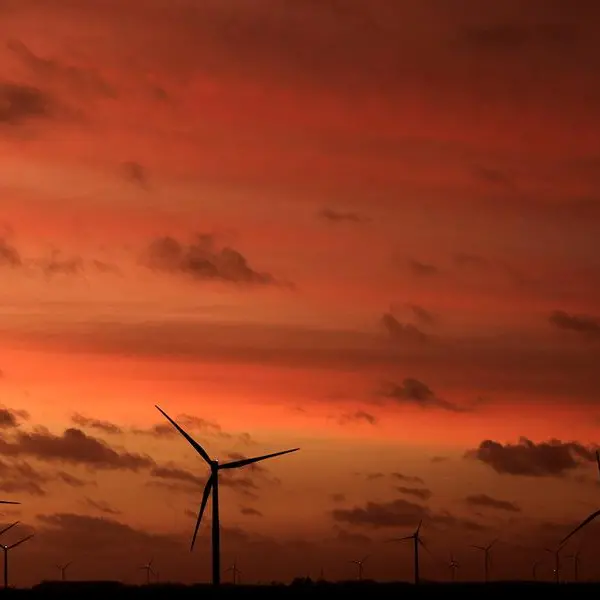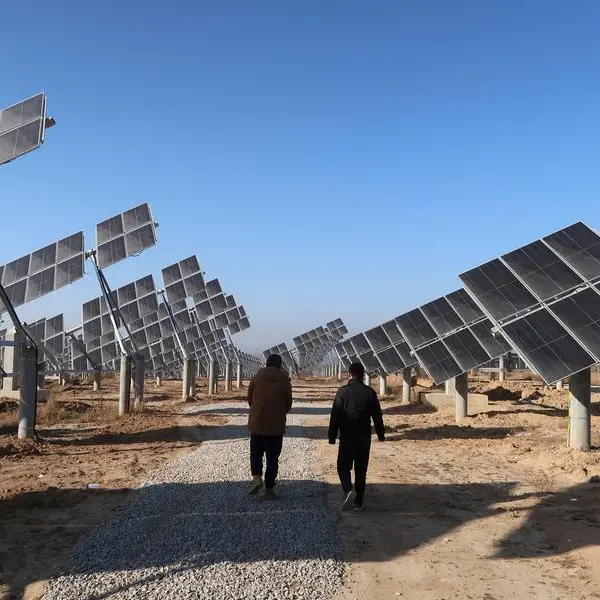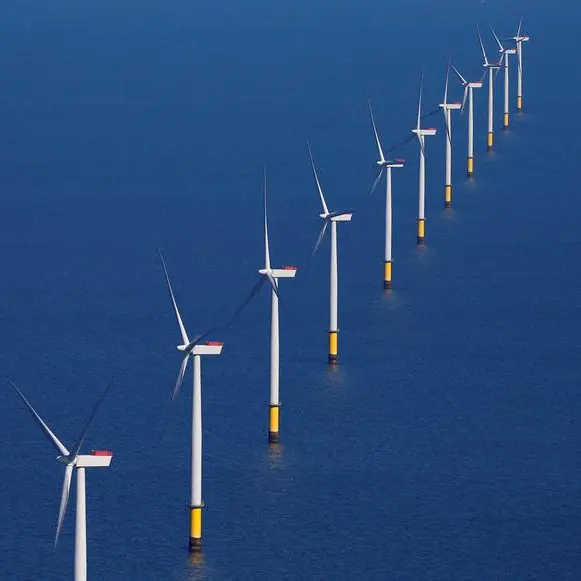PHOTO
A wind turbine is seen behind a streetlamp in Yokohama, Japan August 9, 2017. Kim Kyung-Hoon, Reuters Image used for illustrative purpose
(The opinions expressed here are those of the author, a columnist for Reuters.)
LITTLETON, Colorado - U.S. electricity generation from wind power is on course to surpass coal-fired electricity generation, potentially by 2026, as wind supply growth expands at a record pace just as coal-fired generation is cut across the country.
Coal-fired power remains the second largest source of U.S. electricity behind natural gas, and over the first 10 months of 2023 coal-fired output was roughly 60% greater than total generation from wind sources, data from think tank Ember shows.
But with wind power generation rapidly rising in most regions while utilities steadily cut coal capacity, wind output is on track to eventually overtake coal output within the U.S. electricity generation mix, which will mark a significant milestone in U.S. energy transition efforts.
COAL CUTS
Power generation firms throughout the United States are rolling out renewable power at a record clip while cutting back on production from coal-fired power stations in a bid to curb emissions and slow further climate change.
In 2015 - before U.S. power producers accelerated renewable power development - coal-fired electricity generation was nearly 700% greater than electricity output from U.S. wind farms.
But since 2015 U.S. utilities have cut coal-fired capacity by 30% and boosted wind capacity by over 90%, Ember data shows, making wind power the largest source of clean electricity.
For 2023 as a whole, total coal output may only be around 50% larger than wind output, as wind generation traditionally picks up late in the year due to higher wind seeds which may allow utilities to further throttle back coal-fired production.
Additional cuts to coal capacity are expected in the coming years, with current announcements by utilities indicating that overall coal capacity will drop to 159 gigawatts (GW) by the end of 2026, from 318 GW in 2011, according to the Institute for Energy Economics and Financial Analysis (IEEFA).
PEAKS AND TROUGHS
U.S. wind generation already briefly surpassed total coal-fired power output in April this year, when wind electricity generation totalled 42.85 terawatt hours compared to the 39.8 TWh generated by coal plants, according to Ember.
But since that point total U.S. wind generation has slumped below potential due to unusually low wind speeds.
Total U.S. wind output was down by around 20% in both May and June from the same months in 2022, despite roughly 5,000 megawatts of new capacity brought online in late 2022 and early 2023, data from Ember and S&P Global shows.
Wind output levels recovered to well above the corresponding months in 2022 in August through October, and should remain strong over the remainder of the year if the traditional pick up in wind speeds are seen as winter sets in.
Of course, the intermittent nature of wind-fed electricity means that utilities must keep some fossil-fuel powered plants online to produce dispatchable electricity as needed whenever renewable electricity supplies drop off.
But power firms are already committed to using gas-fired plants to provide that baseload role, as gas plants emit less pollution than their coal-fired counterparts.
That means that within the current decade U.S. wind power will be able to surpass coal-fired power in the electricity generation mix, and help accomplish a major U.S. energy transition target.
(Reporting by Gavin Maguire; Editing by Stephen Coates)





















